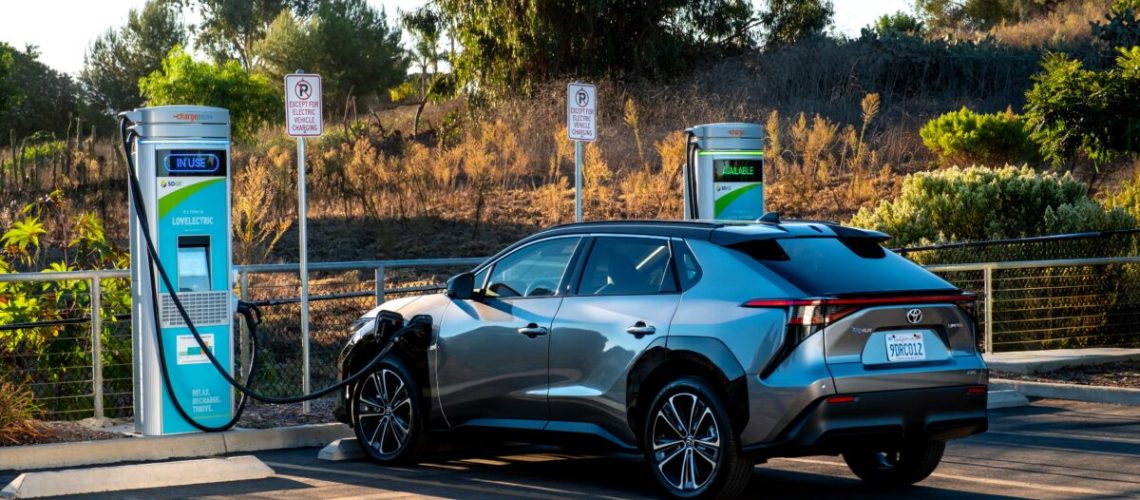Electricity system stakeholders have been eyeing vehicle-to-grid technology for its ability to improve grid reliability, among other things.
Southern California utility San Diego Gas & Electric Company (SDG&E) and Toyota Motor North America are working together on researching vehicle-to-grid applications (V2G) for battery electric vehicles.
The research is specifically focused on bidirectional power flow, a technology that would allow EV owners to both draw power from the grid, as well as export it back to the power system from their car batteries. Electricity system stakeholders have been eyeing vehicle-to-grid – or V2G – technology for its ability to improve grid reliability and resilience, as well as help integrate renewables and potentially lower electricity costs.
“V2G has the potential to be a game changer for the power grid and for consumers,” Miguel Romero, SDG&E’s chief commercial officer, said.
SDG&E’s footprint is one of the largest markets for Toyota’s electric and plug-in hybrid electric vehicles, and California itself is one of the fastest-growing EV markets in the region. The utility has electrified over a fifth of its over-the-road fleet, and has deployed more than 3,600 chargers at offices, schools, parks and industrial facilities in its service territory.
The companies intend to conduct their research at SDG&E’s San Diego campus, and will use a bidirectional charger and vehicle-to-grid platform from Fermata Energy. Based on this research, SDG&E is aiming to get a better understanding of the infrastructure it will need to deploy to ensure the growth of vehicle charging infrastructure. Both companies also plan to pinpoint new products and services that can provide customer benefits.
Vehicle-to-grid technology essentially allows EVs to operate as grid storage assets that provide the same services as stationary storage, but at a lower cost, David Slutzky, founder and chairman of Fermata Energy, told pv magazine USA.
The size of EV storage capacity is massive, Slutzky added – California, for instance, anticipates having 8 million EVs on the road by 2030. If every one of these EVs was paired with a 10 kW bidirectional charger, this would represent an 80 GW grid resource, he said.
Toyota is looking to empower utilities to better anticipate and leverage the significant number of plug-in hybrid and electric vehicles on their grids, both as a growing source of energy demand and, in the future, energy supply, Christopher Yang, group vice president of Toyota EV Charging Solutions, said.
“We are embracing the concept of an entire electrified ecosystem for our customers, and the ability for vehicles to integrate with the grid is an essential component of this ecosystem,” Yang said.
Bidirectional charging technology has been installed across the country, but is still somewhat nascent, according to Slutzky. In thinking about policy support for this sector, parallels can be drawn between the technology and the birth of the rooftop solar industry, he said. There were three policy pillars that supported the growth of rooftop solar – interconnection, incentives, and compensation for excess solar generation, in the form of net energy metering.
“Similarly, bidirectional charging and V2G needs to be more easily approved for interconnection, gain access to incentives already available for stationary storage and unidirectional chargers, and become eligible for compensation for exports of power from EVs to the grid,” Slutzky said.
Bidirectional charging technologies also require a fourth interoperability pillar, he added.
“Although efforts are underway to standardize communication and technical standards, the fully interoperable environment needed for V2G to scale will require a great deal of work,” Slutzky said.



